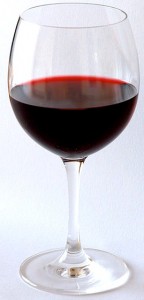 My love of wine and my predisposition toward skin allergies do not always complement one another, and as such, I’m extra picky about the wine I drink. I know which regions, which vineyards and even what type of grapes I can have. Therefore, when I say “no” to merlot, it’s not a reference to the movie Sideways (though I can appreciate the sentiment).
My love of wine and my predisposition toward skin allergies do not always complement one another, and as such, I’m extra picky about the wine I drink. I know which regions, which vineyards and even what type of grapes I can have. Therefore, when I say “no” to merlot, it’s not a reference to the movie Sideways (though I can appreciate the sentiment).
Over the years, my friends have had their own wine dilemmas, to which we’d question, “Is it the sulfites?” “How about the tannins?” And, “Maybe you’re just dehydrated?” (I usually follow a glass of wine with a full glass of water, just to be on the safe side.) Never, did anyone ever think to ask, “Is it the … arsenic?”
On March 19, CBS This Morning ran a story about an impending class action lawsuit being filed against 24 California winemakers. The lab analysis of more than 1,300 bottles of wine revealed that nearly a quarter of them had arsenic levels that were significantly higher than the Environmental Protection Agency (EPA)’s maximum allowable levels for drinking water: 10 parts per billion (ppb). In some cases, the wines had as much as five times the allowable limit; and of the wines tested, the cheaper the wine, the higher the arsenic levels.
 The EPA considers the inorganic form of arsenic a toxic semi-metal element. However, the Food and Drug Administration (FDA) does not regulate arsenic in wine, or any other beverage, in the same way the EPA does for drinking water. The assumption being that, like apple juice, rice milk and even seltzer water, we’re simply not consuming as much of it daily as we do drinking water.
The EPA considers the inorganic form of arsenic a toxic semi-metal element. However, the Food and Drug Administration (FDA) does not regulate arsenic in wine, or any other beverage, in the same way the EPA does for drinking water. The assumption being that, like apple juice, rice milk and even seltzer water, we’re simply not consuming as much of it daily as we do drinking water.
My concern is this. For one thing, Forbes Magazine cited a 1999 National Academy of Sciences report which found that the estimated risk of dying from cancer as a result of arsenic in drinking water at 10 ppb was somewhere between 1 in 500 and 1 in 1,000 people. Furthermore, this is not our only exposure to arsenic. Arsenic can also be found in the air we breathe and food we eat. It is in our soil, in pesticides, as a preservative in pressure-treated lumber, as an additive to lead and copper, and in some glass manufacturing.
Long-term exposure to arsenic can lead to several forms of cancer, liver and kidney damage, damage to our central and peripheral nervous system, and can affect a body’s ability to fight off infection.
When it comes to beverages (including wine) should the FDA set a maximum allowable level for arsenic? Or, at the very least, should it be a requirement to state on the label how much arsenic is present? What do you think? Please feel free to leave a comment below.
***
Photo (bottom right): Jean Adair, Josephine Hull and Carry Grant from the 1944 film Arsenic and Old Lace.
